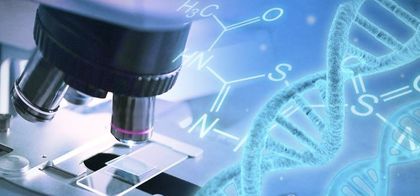3-person IVF technique gives life to 8 babies with no mitochondrial disease in UK
By IANS | Updated: July 17, 2025 17:19 IST2025-07-17T17:12:48+5:302025-07-17T17:19:27+5:30
New Delhi, July 17 In a remarkable breakthrough, scientists in the UK used a three-person in vitro fertilization ...

3-person IVF technique gives life to 8 babies with no mitochondrial disease in UK
New Delhi, July 17 In a remarkable breakthrough, scientists in the UK used a three-person in vitro fertilization (IVF) technique to bring to life eight children and spared them from genetic mitochondrial disease.
The infants -- four girls and four boys, including one set of identical twins -- were born using DNA from three people.
The babies were born to seven women at high risk of transmitting serious disease caused by mutations in mitochondrial DNA, said the researchers from Newcastle University in the UK.
“All babies were healthy at birth, meeting their developmental milestones, and the mother’s disease-causing mitochondrial DNA mutations were either undetectable or present at levels that are very unlikely to cause disease,” the researchers said.
The pioneering study, published in two papers in The New England Journal of Medicine (NEJM), describes the technique where the nucleus from the mother's fertilised egg, along with the nucleus of the father's sperm, is transferred into a healthy egg provided by an anonymous donor.
“Mitochondrial donation technologies are currently regarded as risk-reduction treatments owing to the carryover of maternal mitochondrial DNA during the mitochondrial donation procedure. Our ongoing research seeks to bridge the gap between risk reduction and prevention of mitochondrial DNA disease by addressing this problem,” said lead author Professor Mary Herbert, professor of reproductive biology at Newcastle.
What is Mitochondrial disease?
Mitochondrial diseases can affect any part of the human body, including the cells of the brain, nerves, muscles, kidneys, heart, and liver.
Every year, around one in 5,000 children is born with mitochondrial DNA mutations that can cause devastating disease, led by symptoms including muscle weakness, exercise intolerance, hearing loss, vision problems, seizures, developmental delays, and heart problems.
Mitochondrial DNA is maternally inherited, and these diseases are therefore passed from mother to child. Although males can be affected, they do not pass on the disease.
To date, there is still no cure for people with mitochondrial DNA disease.
What is the 3-person IVF technique?
The three-person IVF technique uses nuclear DNA from a biological mother and father, alongside mitochondrial DNA from a separate egg donor.
“The process essentially replaces the faulty mitochondrial DNA (mtDNA) with healthy mtDNA from the donor,” said Herbert, now at Monash University in Melbourne, Australia.
The study showed that the blood levels of mtDNA mutations were 95 per cent to 100 per cent lower in six newborns, and 77 per cent to 88 per cent lower in two others, compared to levels of the same variants in their mothers.
"These data indicate that pronuclear transfer was effective in reducing transmission of mtDNA disease," they said.
Disclaimer: This post has been auto-published from an agency feed without any modifications to the text and has not been reviewed by an editor
Open in app